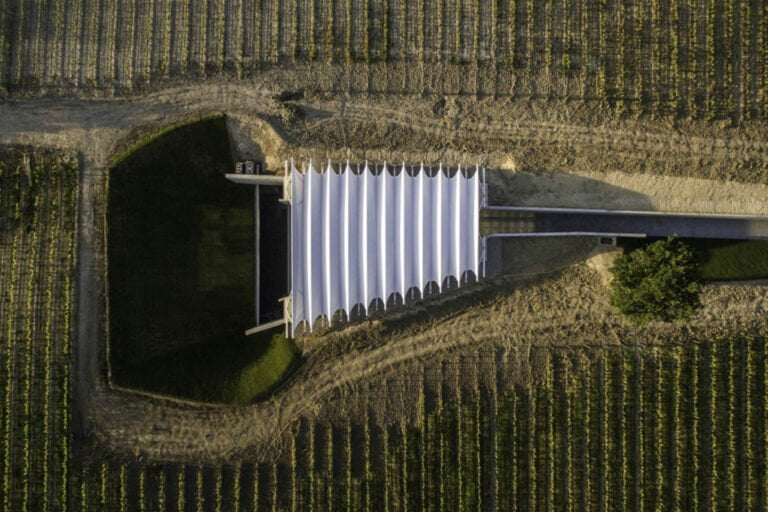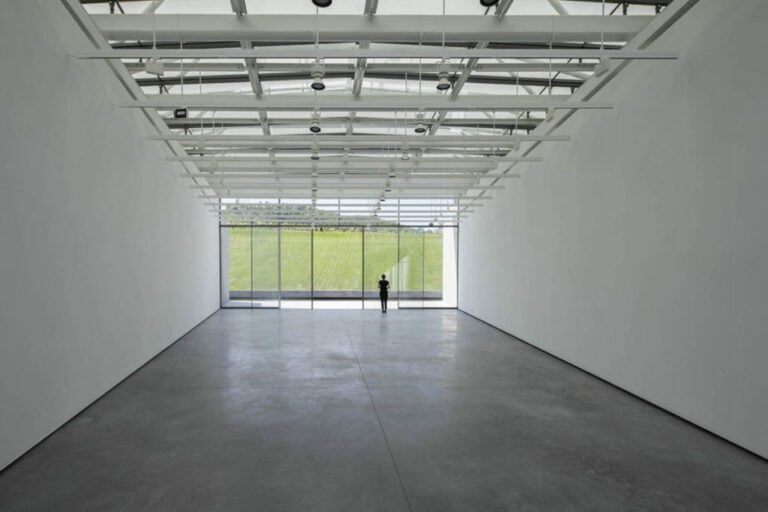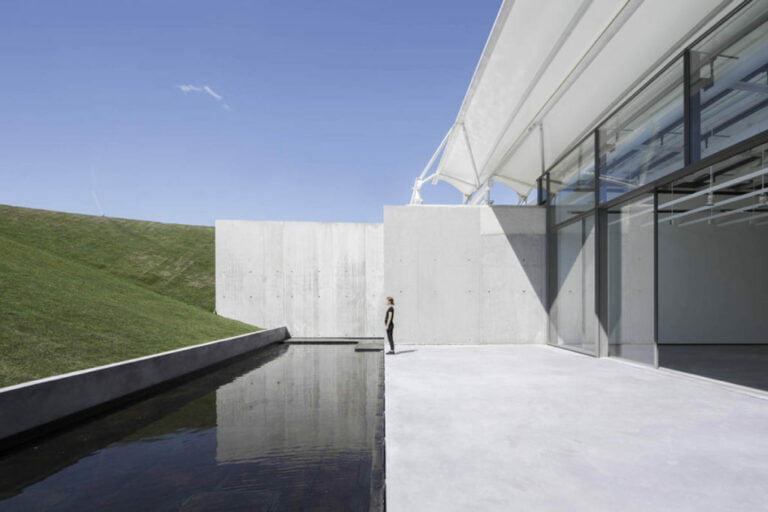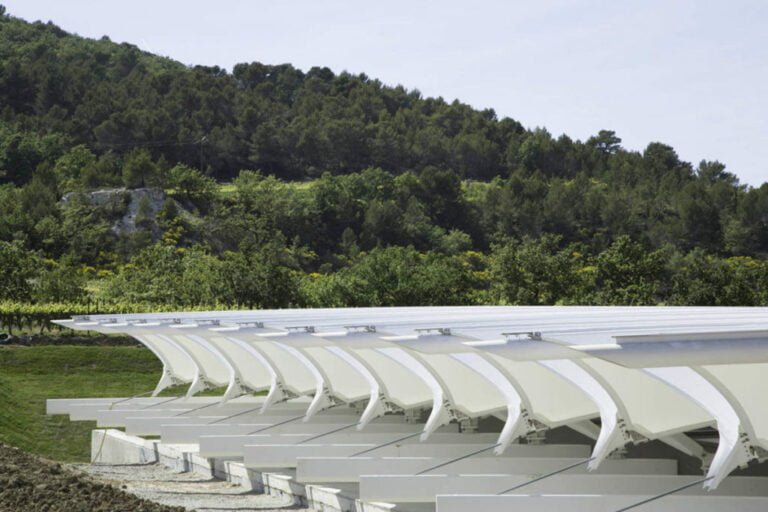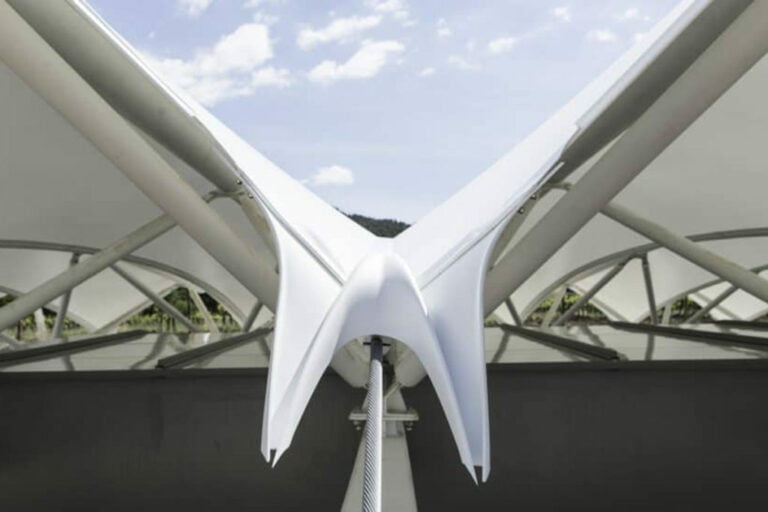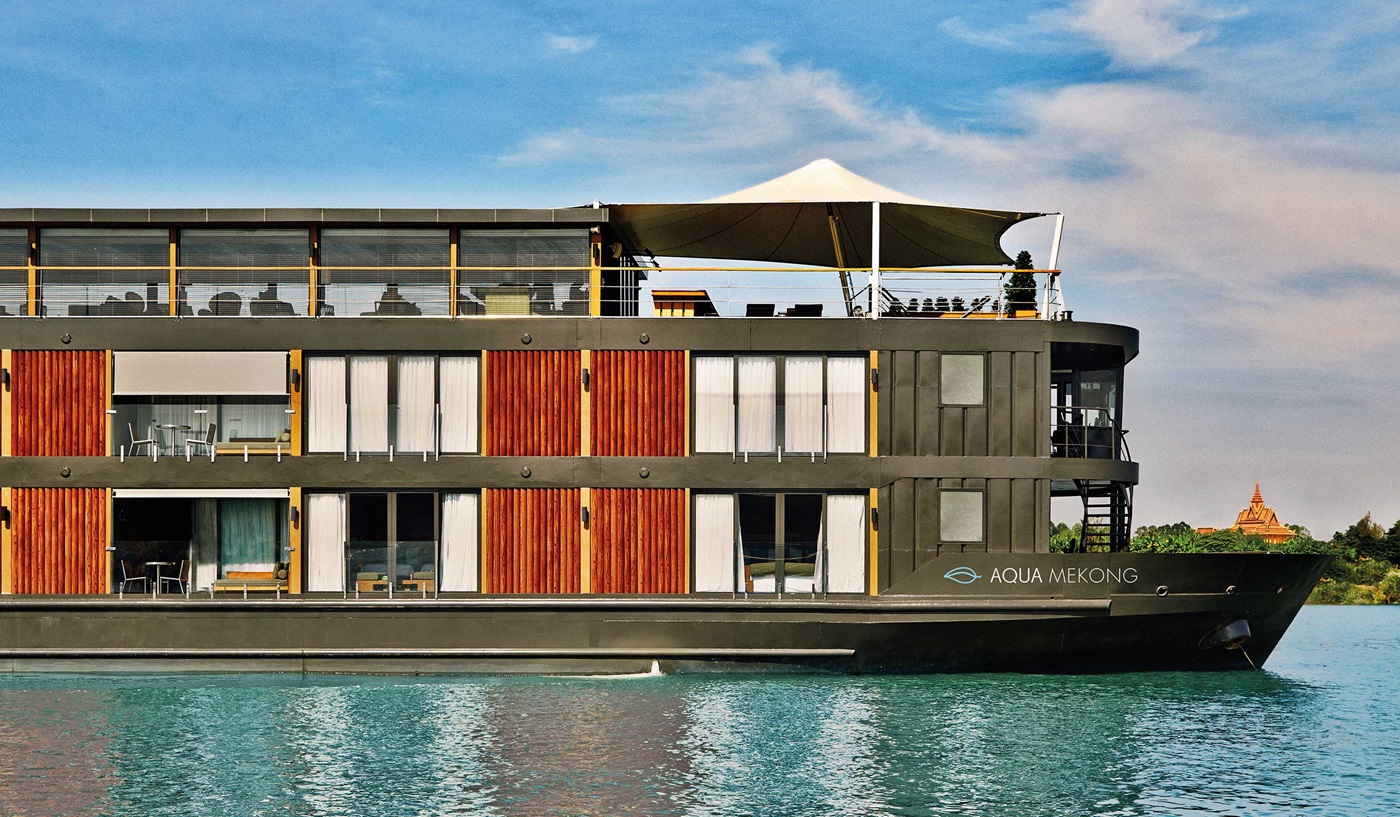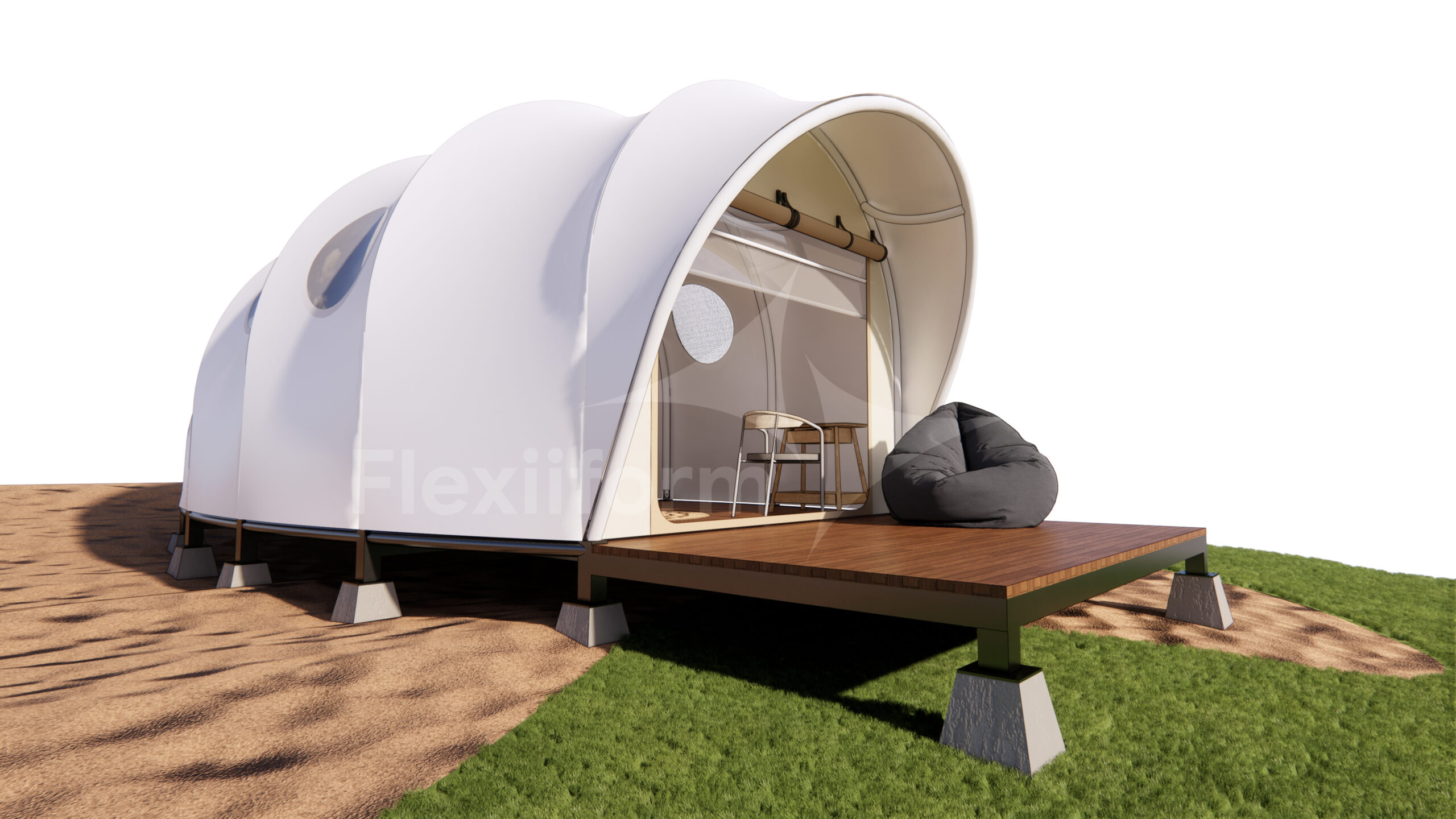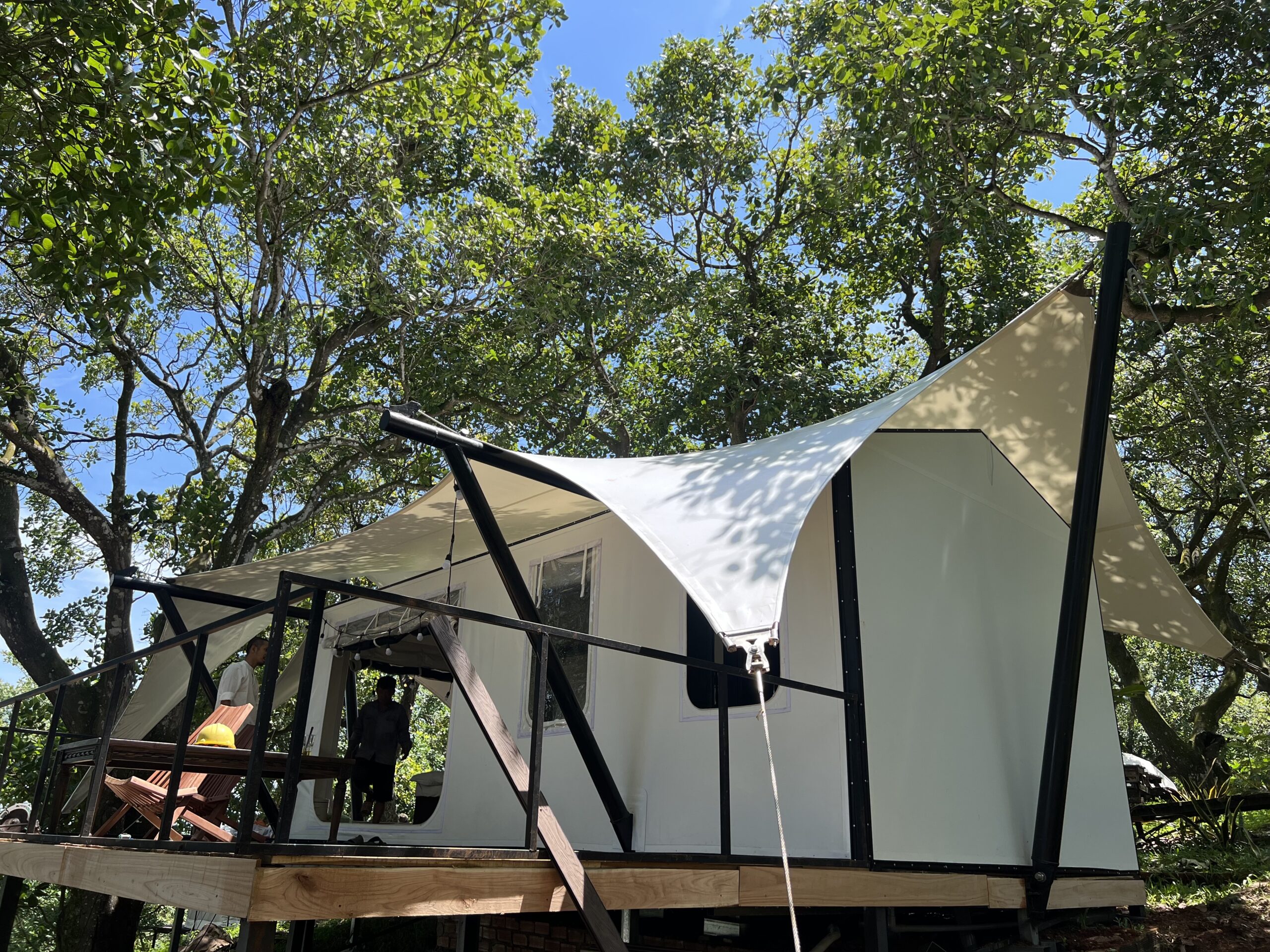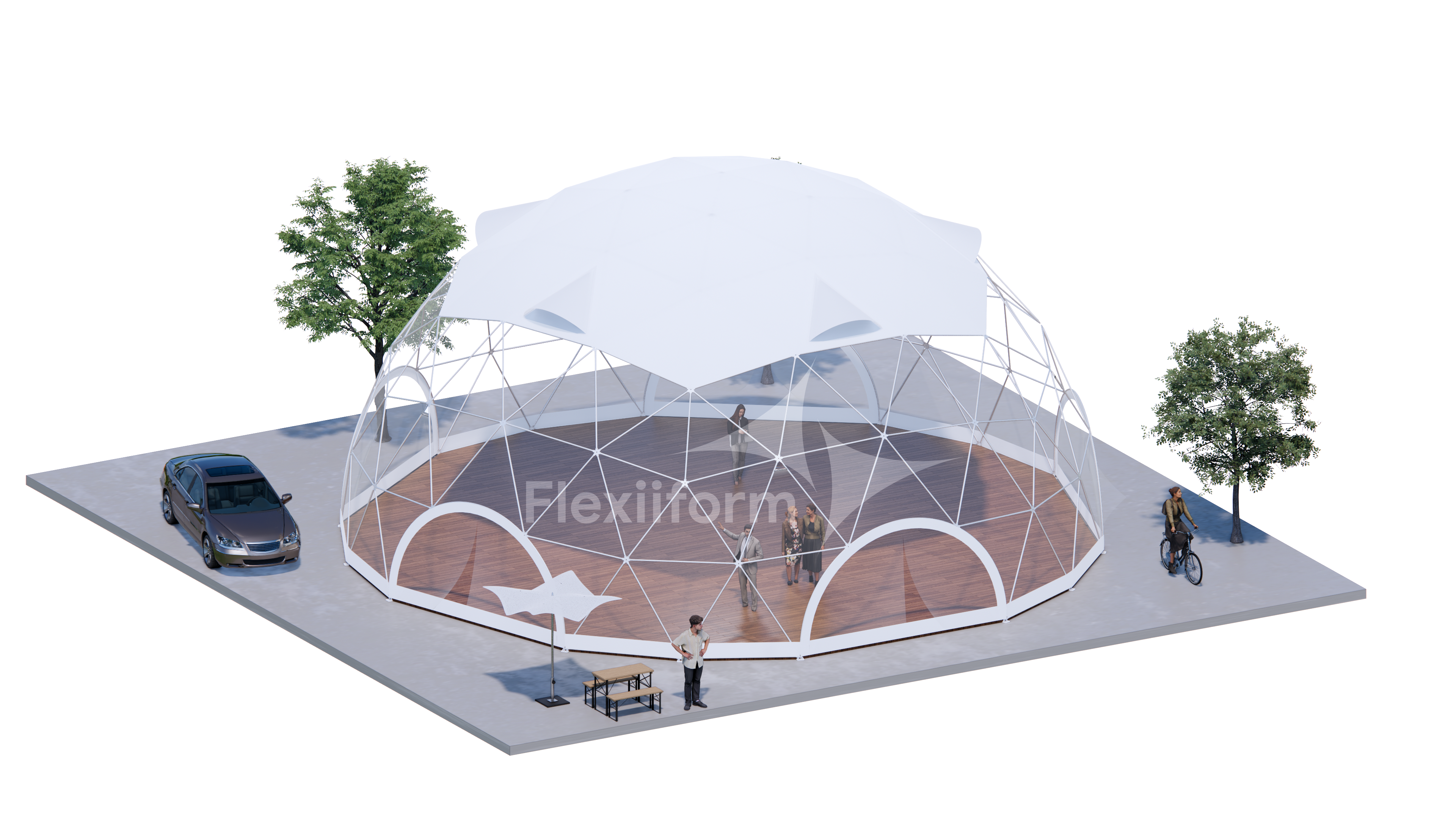Current Situation and Solution: Unique Features of the Art Gallery Château La Coste Canopy – Harmonizing Architecture with Nature
The Art Gallery Château La Coste canopy, a unique project by Renzo Piano Construction Workshop completed, is a sunken exhibition space, nestled among the vines of a winery in Aix-en-Provence, France. With a space of $285$ square meters, this project has a dual purpose of displaying art and storing wine. The uniqueness of the design lies in the $6$ meter deep excavation into the ground to hide the building frame, completely blending into the vineyard. The roof and facade use Architectural stretch canvas material The white colour, contrasting with the simple exposed concrete, forms a pleated sail shape that is attached to thin metal arches. These arches echo the lines of the surrounding vineyards, creating a harmonious overall look that emphasizes the lightness and width of the kite-like building.
—
Technical Requirements Analysis & Solution Context
The Art Gallery Château La Coste project posed many technical challenges and a specific context:
* Integration into the natural terrain: Requires a structure that can be hidden deep underground but still maintains a connection with the surrounding vineyard landscape.
* Dual function: The space must be both optimal for displaying art (requiring natural light and environmental control) and suitable for wine storage (requiring stable temperature).
* Contrasting material combination: Create harmony between hard concrete and light, flexible roofing materials.
* Intricate detailed design: Requires sophistication in every detail to ensure aesthetics, drainage function and weather resistance, especially in humid conditions.
—
Technical Solutions
The Art Gallery Château La Coste canopy is the result of a close collaboration between innovative architectural design and advanced construction techniques.
Design blends into space and optimizes light
To achieve absolute integration with the landscape, the architects decided to dig $6$ meters deep into the ground, completely hiding the house frame in the vineyard, highlighting the roof. Under the canopy of the Art Gallery Château La Coste, the $160$ square meter space displays sculpture and photography exhibitions, flooded with natural light. Two glass end walls allow light to flood in and can slide open, forming an entrance and connecting to the terrace overlooking the pool. The minimalism of the raw concrete walls acts as a neutral backdrop, highlighting the artworks. At the rear of the building, a space dedicated to sculpture is extended by a water mirror, reflecting almost the entire width of the pavilion, adding depth and visual impact.
Tension fabric materials and roof structures
The roof is constructed from PVC/PES (PVDF), specifically Serge Ferrari's TX30 – a polyester fibre with an advanced PVC coating that is durable, low maintenance and has a matte, dirt-repellent finish. The material is stretched over steel arches and cable channels to create 10 light sails above the gallery's glass roof. The load-bearing roof structure, likened to the sails of a boat or a kite, extends the space and adds a sense of lightness to the concrete structure below. Horizontal ridges of the roof run across the width of the gallery, creating a continuation of the rows of vines when viewed from above, creating a harmonious and refined overall look.
The pinnacle of detailed design and construction
Renzo Piano worked closely with the construction team to realise his vision. The process combined a traditional design studio approach (hand sketching details) with modern 3D printing technology, allowing for the development of beautiful details at every junction of the structure. The rainwater harvesting detail was meticulously designed, based on the shape of a Swallow, to channel rainwater away from the structure and avoid any splashes while maintaining its beauty. The installation in spring to be ready for the opening ceremony in early summer faced unusually wet and muddy weather. Keeping the membrane free of stains was a top priority, requiring care and a high level of technical skill in handling, as experienced by professional units such as Architen in similar projects.
—
Results and Performance Evaluation
The Art Gallery Château La Coste canopy is a remarkable achievement in combining modern architecture with natural landscape and diverse functions. The project not only effectively solves the problem of integrating exhibition space and underground wine cellar, but also optimizes the use of natural light, creating an ideal exhibition environment. The use of PVC/PES stretch fabric has brought a lightweight, durable, easy-to-maintain and highly aesthetic canopy solution, with a pleated sail shape that blends with the vineyard. The meticulous design of every detail, from the rainwater collection system to dust control during construction, has ensured that the project achieves sophisticated beauty and efficient operation, affirming its position as a unique architectural icon, standing out in the natural landscape.
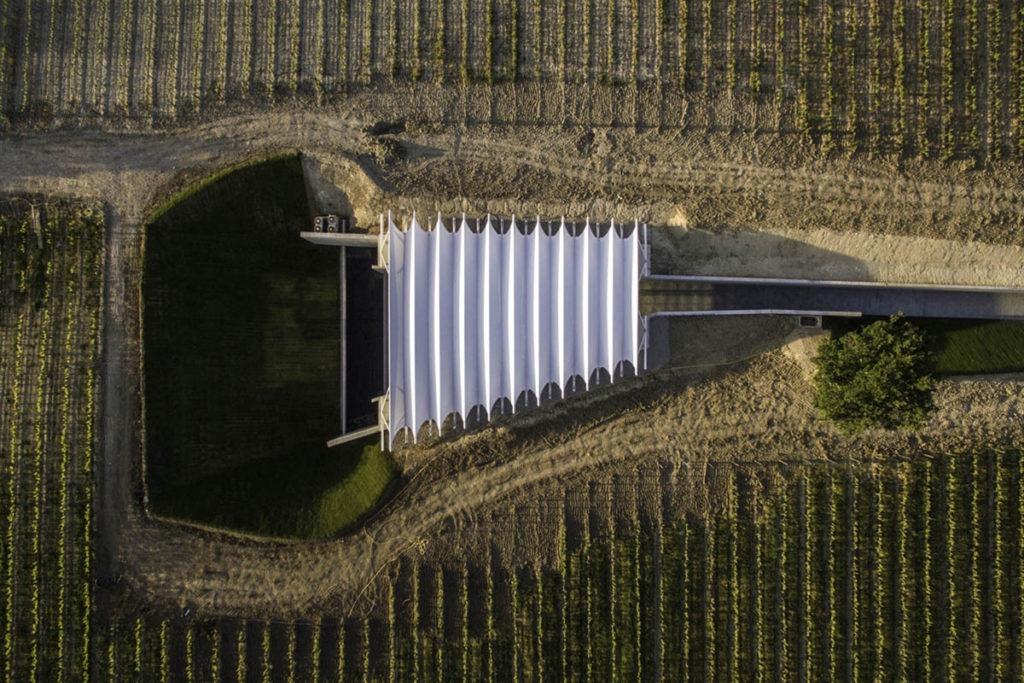
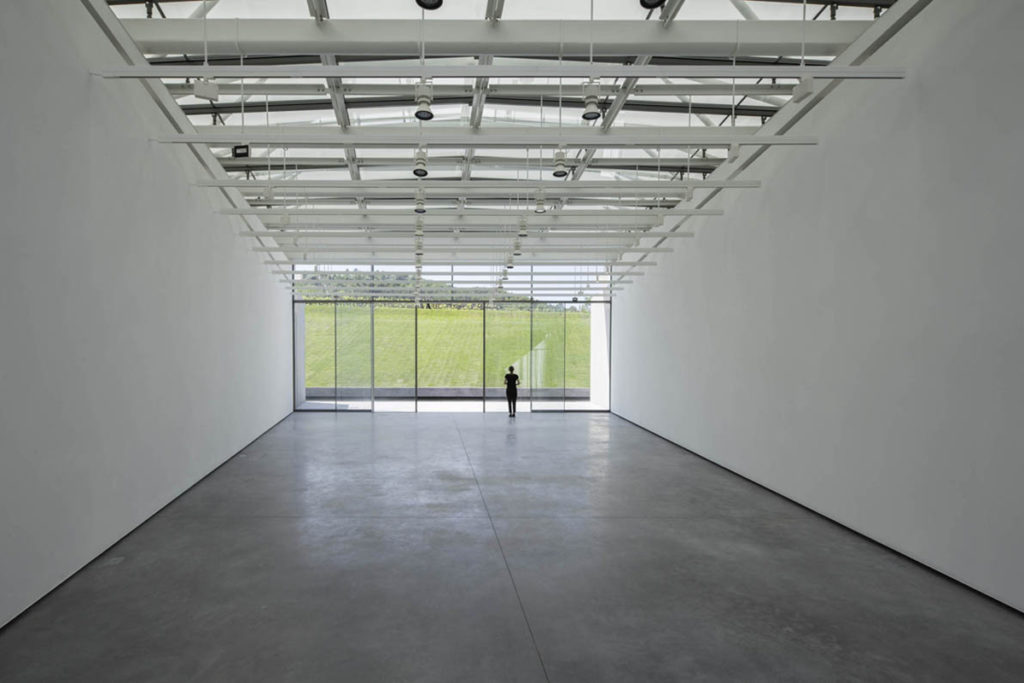

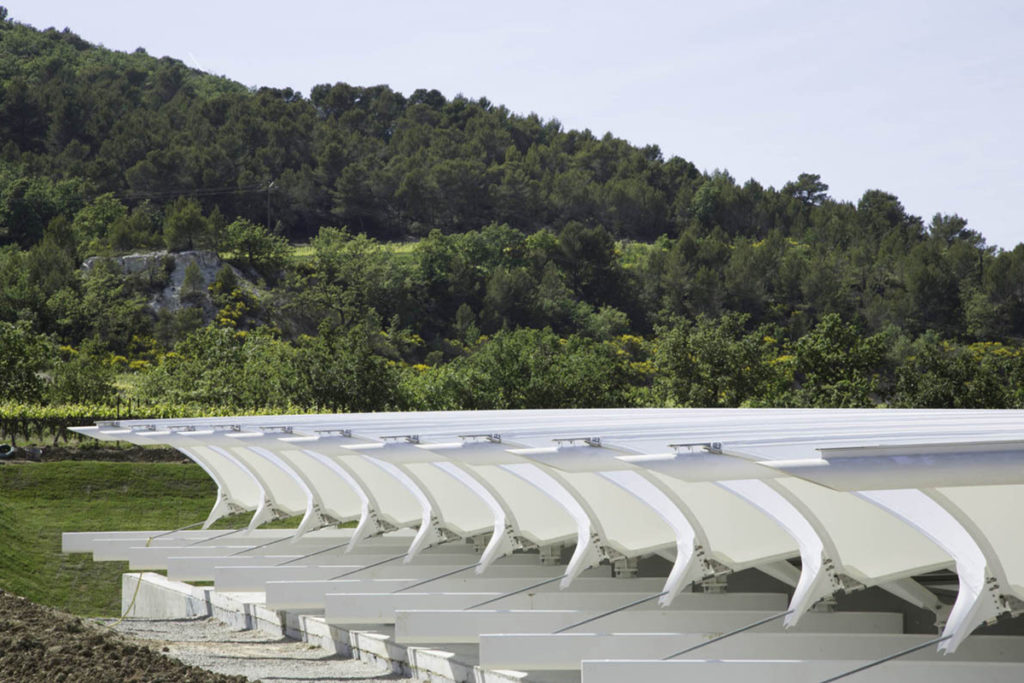
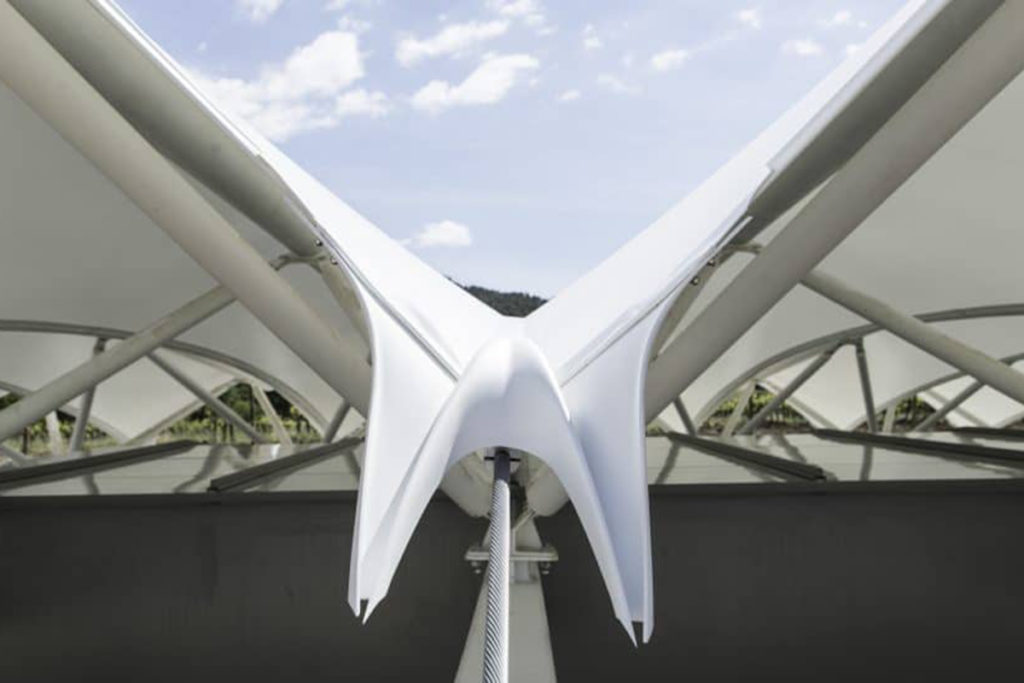
—
Contact Technical Consulting
Flexiiform is proud to be one of the leading units in Vietnam providing solutions for designing and constructing tensioned canvas. With its predecessor originating from the company FasTech, Flexiiform team gathers experts with over 10 years of experience in the industry along with a team of consultants providing the right solutions according to the requirements for a variety of models and projects at home and abroad. We are committed to providing Art Gallery Château La Coste roofing solutions and similar projects with high quality, breakthrough in design and optimal efficiency, especially in the use of load bearing roof structure and Architectural stretch canvas material.
For expert advice on stretch fabric solutions for your art or architectural project, please contact us.
Contact information:
Company: Flexiiform
Phone: +84 8678 68830
Website: https://flexiiform.vn/
Fanpage: https://www.facebook.com/flexiiform/


